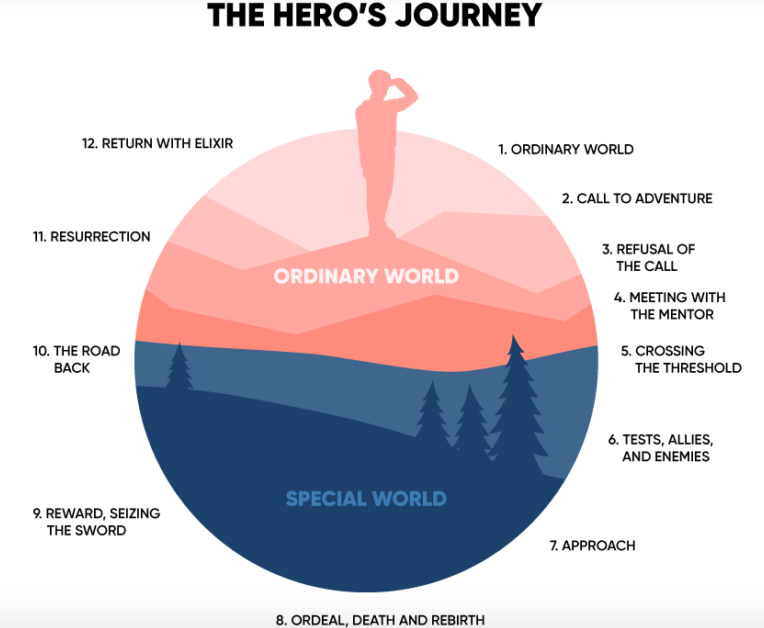
As a professional storyteller, perhaps the question I get most often is, “What about Joseph Campbell’s “Hero’s Journey”? Is that a storytelling structure that I can apply to my work in innovation?”
If you’re not familiar with JC’s 1949 deep academic tome, “Hero With 1000 Faces” or the brilliant book and PBS interview series with Bill Moyers called, “The Power of Myth,” it’s a glorious review of many of the world’s religions and myths. Using the blueprint of a hero who sets out on a journey, enlists friends, overcomes obstacles, and survives tests, the hero manages to save the world despite his humanity and cruel adversaries to make life better for all of us.
If this resonates with the politics, budget fights, and push to get your innovation to its finish line, it might be an innovation storytelling framework that works for you.
First, consider yourself and your team as the heroes. You can use the hero’s journey to plot the arduous path you might need to take. Anticipate obstacles, failed experiments, agonizing reporting on progress [or lack thereof], and of course, the redemption of bringing an iterative idea or a moonshot idea to fruition.
Next, run the same steps thinking about your customer’s journey. What’s their goal? What challenges are they confronting? What tests and competition will they encounter? What does success – e.g., purchase – look like for them? Give it a shot:
1. Defining the goal: The first step of the hero’s journey is to define a clear purpose. Innovation leaders can use this step to articulate the problem they are trying to solve and the impact they hope to have with their innovation.
2. Overcoming obstacles: The hero’s journey involves facing various challenges and obstacles along the way. Innovation leaders can apply this concept by identifying the challenges they will face in bringing their innovation to market and developing strategies to overcome them.
3. Gaining support: The hero’s journey often involves gaining allies and support along the way. Innovation leaders can use this concept to build a network of stakeholders who are invested in their innovation and can help bring it to life.
4. Reaping the rewards: The hero’s journey culminates in the hero achieving their goal and reaping the rewards of their journey. Innovation leaders can use this concept by celebrating their successes and sharing the impact of their innovation with others.
By applying the principles of the hero’s journey to your work, you can create a compelling narrative around innovation that engages and motivates others to support you and the other risk-takers who will get behind your breakthrough ideas. Connecting the hero’s journey back to larger corporate strategies and dedication to customers and users can create a compelling narrative to spread the word about your success.
Need help? I’d love to show you massively valuable storytelling skills, frameworks, and deliveries that make your projects connect and influence your audiences.